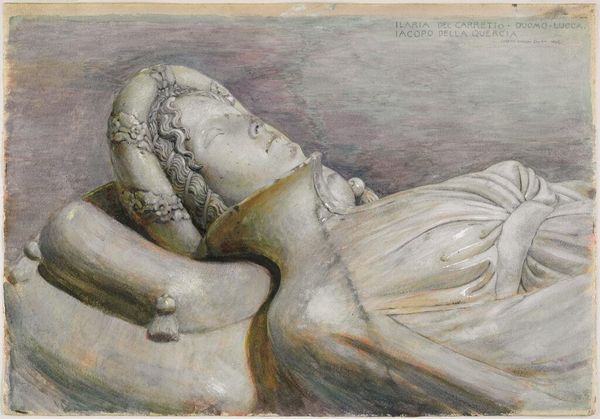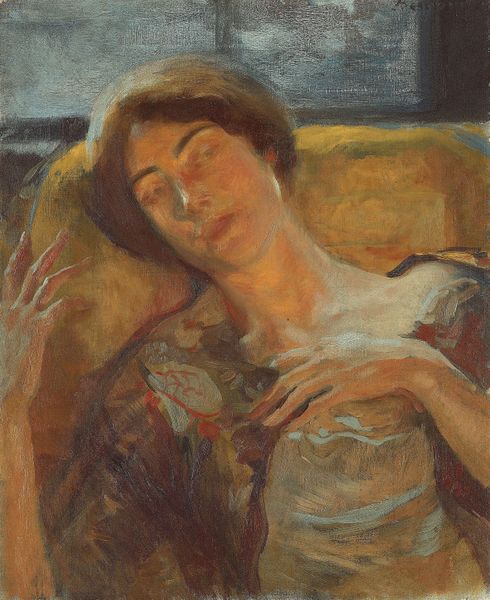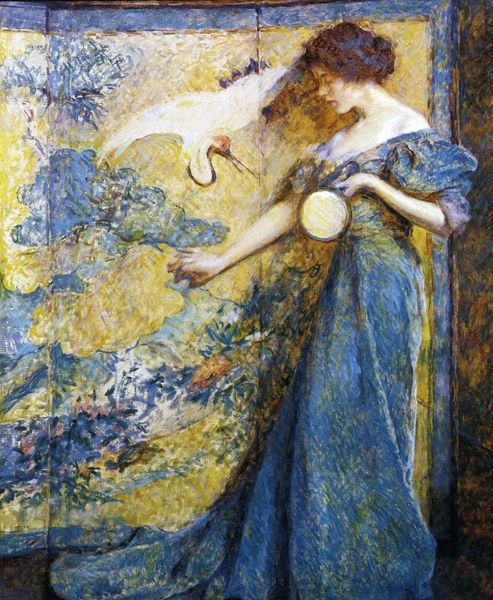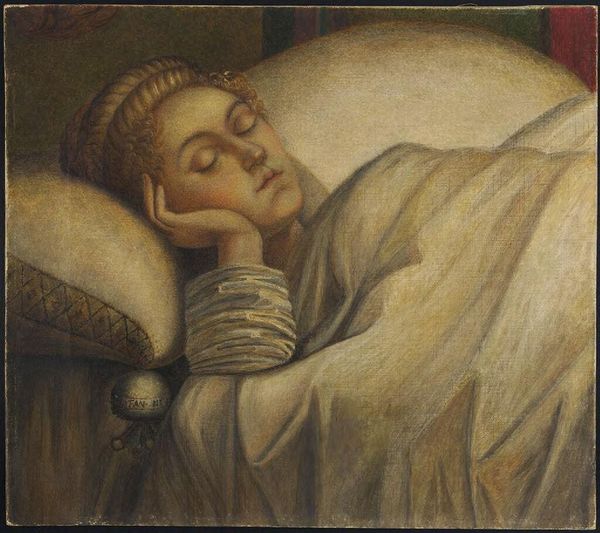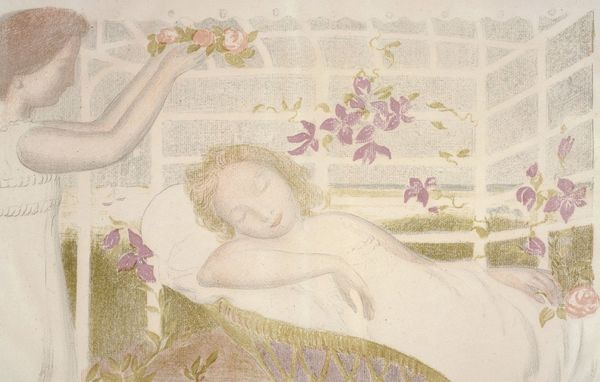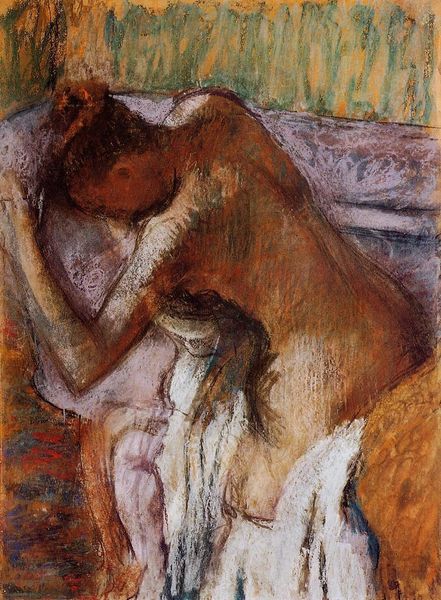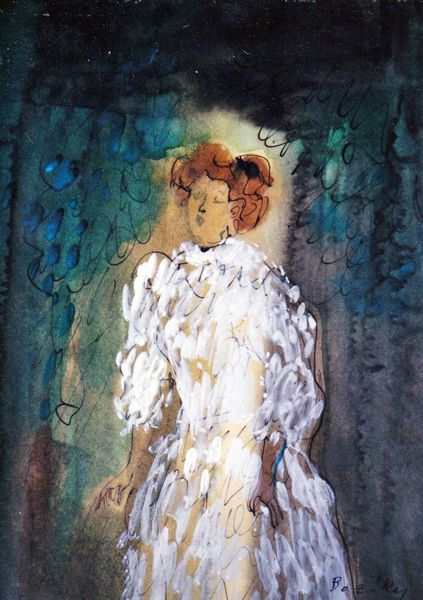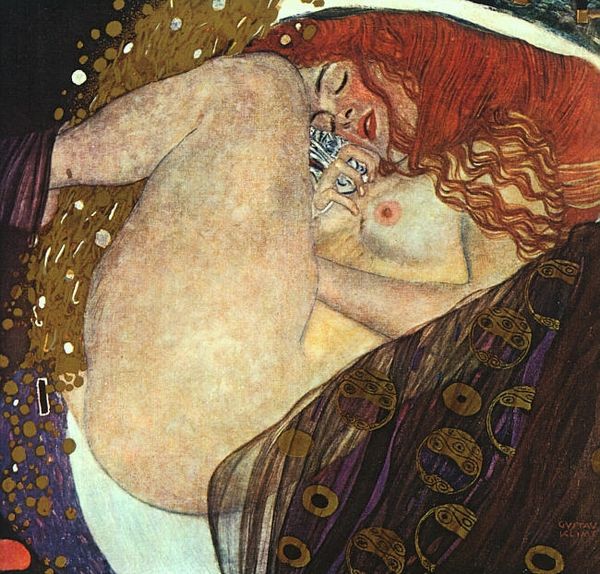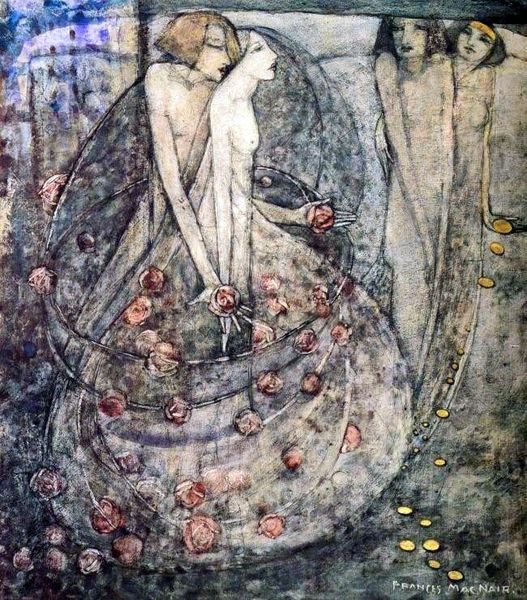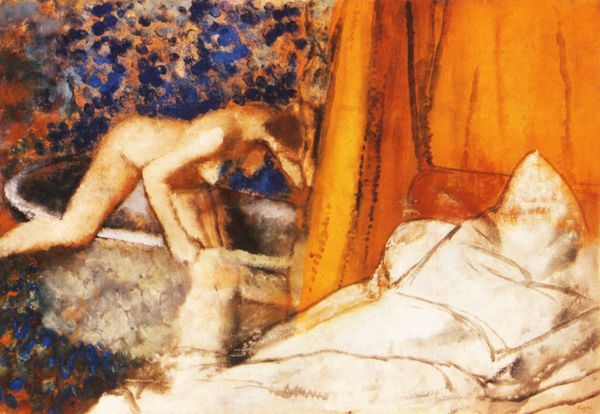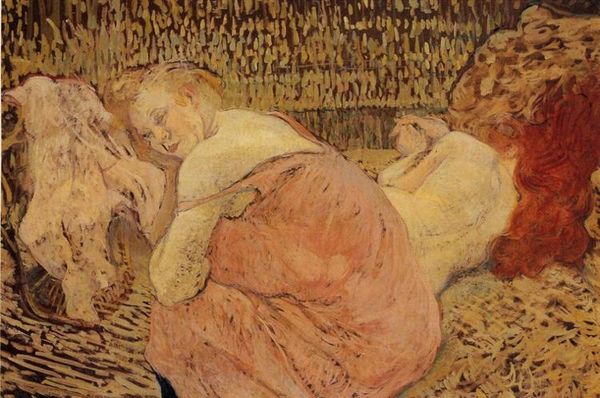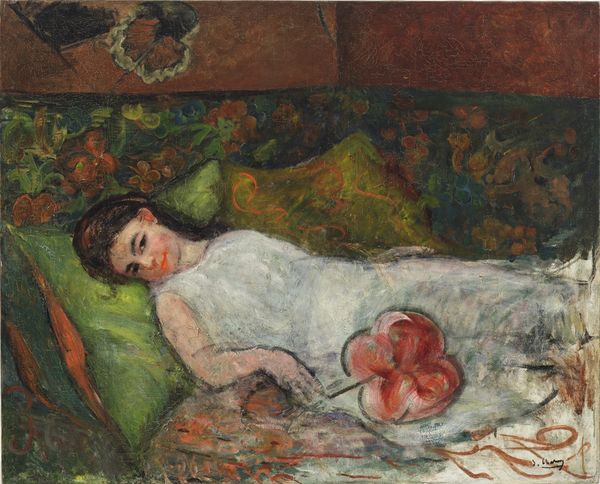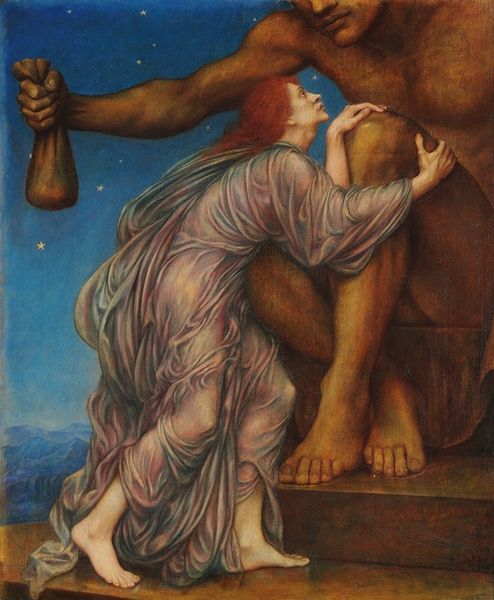
Copyright: Public domain
Editor: This is John Ruskin's "Copy of the Head of St Ursula from Carpaccio," made in 1877, using watercolor and gouache. It has a dreamy quality, almost ethereal. The composition feels very intimate. What aspects of the original Carpaccio do you see reflected here? Curator: Let us consider the formal elements. Note the use of line to define the contours, creating a sense of delicate refinement. Ruskin's application of watercolor produces a luminous effect. He seems to be grappling with the challenge of translating the original's tempera surface into the immediacy of watercolor. Notice, however, how his emphasis deviates from the Renaissance piece towards Romantic idealism. Editor: So, the focus isn't just on replicating the image but interpreting it through a different lens and a different medium. Do you think his Pre-Raphaelite background influences this? Curator: Undeniably. Ruskin's Pre-Raphaelite tendencies shine through in his attentiveness to detail and color, although simplified. Consider also the angle: the composition is truncated, emphasizing only the head. Are we invited to consider the form of the sleeping maiden or does Ruskin subtly direct our consideration to her moral condition? Editor: I see. It’s more than just a copy; it's Ruskin's commentary on Carpaccio. Thanks, that helps to highlight Ruskin's technique as distinct from the original. Curator: Indeed. Formal analysis unveils not just what is depicted, but also how the artist interprets and transforms it. Each element contributing to a newly constructed whole.
Comments
No comments
Be the first to comment and join the conversation on the ultimate creative platform.
